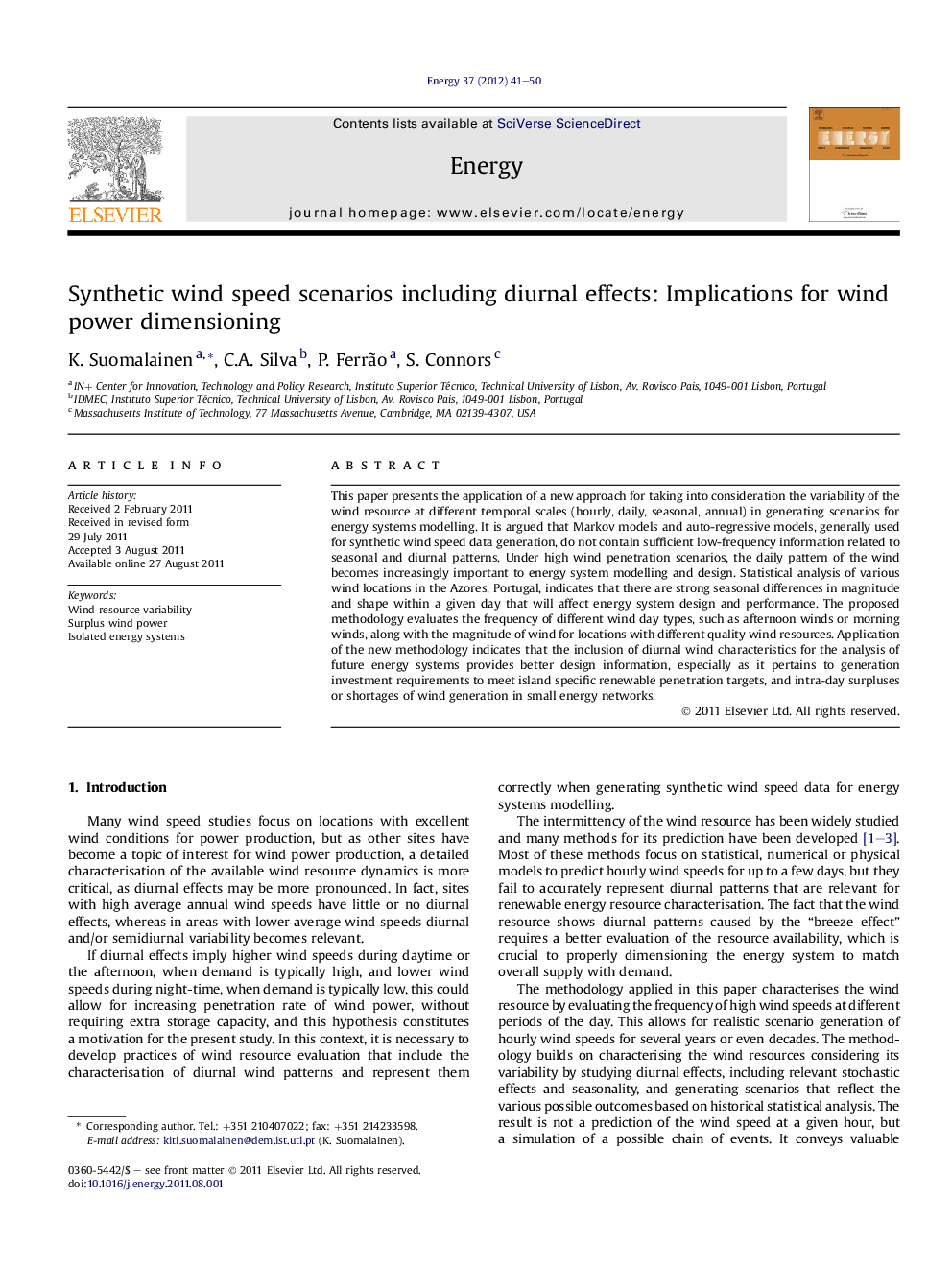| Article ID | Journal | Published Year | Pages | File Type |
|---|---|---|---|---|
| 1733907 | Energy | 2012 | 10 Pages |
This paper presents the application of a new approach for taking into consideration the variability of the wind resource at different temporal scales (hourly, daily, seasonal, annual) in generating scenarios for energy systems modelling. It is argued that Markov models and auto-regressive models, generally used for synthetic wind speed data generation, do not contain sufficient low-frequency information related to seasonal and diurnal patterns. Under high wind penetration scenarios, the daily pattern of the wind becomes increasingly important to energy system modelling and design. Statistical analysis of various wind locations in the Azores, Portugal, indicates that there are strong seasonal differences in magnitude and shape within a given day that will affect energy system design and performance. The proposed methodology evaluates the frequency of different wind day types, such as afternoon winds or morning winds, along with the magnitude of wind for locations with different quality wind resources. Application of the new methodology indicates that the inclusion of diurnal wind characteristics for the analysis of future energy systems provides better design information, especially as it pertains to generation investment requirements to meet island specific renewable penetration targets, and intra-day surpluses or shortages of wind generation in small energy networks.
► A new methodology including daily patterns is used for synthetic wind speed data. ► The methodology is applied to different wind regimes in on three islands. ► The impact of daily patterns on surpluses and shortages is evaluated.
